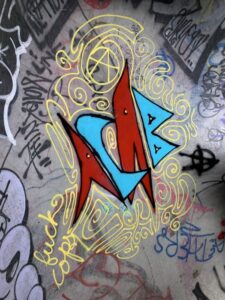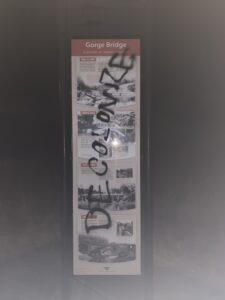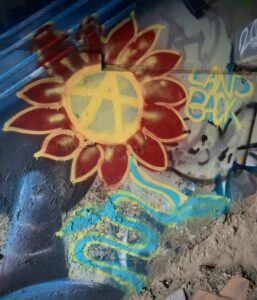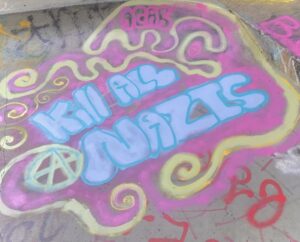The following contains mentions of racism, genocide, and various types of violence. Please only read this if you are in a mental space where you are able to handle reading through this difficult subject matter.
I acknowledge that I am on the traditional territory of the Esquimalt, W̱SÁNEĆ, T’Sou-ke, Tsawout, and Songhees peoples, whose relationship with the land continues to this day. I recognize that although I am Indigenous, I am a settler on land that is not my own and was stolen through the Douglas Treaties. I respect the stewards of these territories, past as well as present. I take accountability that I’m here because of colonization, as well as the corrupt child welfare system. Today, and going forward, I commit to support Indigenous perspectives and aid in bringing awareness to and uplifting the current generation of Indigenous peoples, who are catalysts for a decolonized future. I can imagine a world without colonial governance.
On Saturday, September 30, you will hopefully see a majority of people wearing an orange shirt to commemorate the lives that were lost during the residential “school” system between 1831 and 1996.
Colloquially known as Orange Shirt Day, the National Day for Truth and Reconciliation, which began in 2013 (as Orange Shirt Day), has been a statutory federal holiday since 2021. When Indigenous families were still forced to hand over their children to authorities for the purpose of assimilation, September 30 marked the time of year that Indigenous children were typically stolen from their families.
That’s why the National Day for Truth and Reconciliation is a day to honour the children who never made it home, the survivors, and the communities affected. These so-called “schools” were nothing like what non-Indigenous children experienced at their school. These were separate, segregated boarding houses made to assimilate Indigenous youth and rip their identity from them.
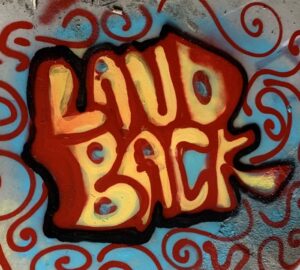
The residential “school” system was created by the Canadian government and Christian churches for dual purpose: conversion to Christianity and assimilation of Indigenous youth into the dominant culture of Europe. Christianity was the perfect religion for this, seeing as a lot of the Bible and rhetoric surrounding it is based in patriarchy and white supremacy, the same beliefs the founders of “Canada” had. Knowing the beliefs that fuel imperialism is important in order to deconstruct colonial mentality and agendas.
It’s also important to remember the muscle behind the madness. Police and RCMP officers are agents of the colonial government. Police, and particularly RCMP, were extremely involved in maintaining the stronghold of forced assimilation. The RCMP continue their racist legacy in other ways to this day.
The RCMP was responsible for arresting Indigenous parents who refused or resisted the stealing of their children. They also captured absentees and returned runaway survivors if they were discovered. The RCMP has a history of harm and hatred toward Indigenous people. The only way to totally stomp out police brutality is to abolish the police.
The police continue to this day attacking Indigenous communities and land and water defenders. Take the Wet’suwet’en land defenders, who are protecting the land they are a part of with peaceful protests, just to be brutally arrested. The RCMP continually uses excessive force when no force is necessary.
This isn’t a one-off incident, this is an example of the pattern of brutality enacted by the state against Indigenous peoples who refuse to assimilate.
This is why ACAB is an important abolishment movement that will protect Indigenous peoples. “ACAB” stands for “all cops are bastards.” It’s commonly misunderstood as being against individual people who are part of the police force, but saying “all cops are bastards” refers not to any one person, but rather a corrupt system that needs to be abolished. By choosing to be a cop, one is choosing to support the colonial force subjugating Indigenous peoples, as well as the rest of the population.
This is why anarchism could be a way to move forward with mutual aid instead of the current centralized colonial government in place. Abolishing the current system is the reconciliation needed. Nods in the right direction and apologies aren’t enough. The truth about what has happened, and continues to happen, must be brought to light before change can happen. There needs to be a switch in the consciousness of the general population to recognize Indigenous sovereignty and stop trying to squash Indigenous culture through stealing the youth.
Although this piece is about truth and reconciliation for Indigenous peoples, it’s also important to note that other people of colour have also been unjustly and disgustingly treated. While residential “schools” are obviously an atrocity, it’s important to note the last racially segregated school for Black children (located in Nova Scotia) was closed as late as 1983. Not nearly as much about racial segregation is mentioned here in this country as is in the settler-named “United States of America,” yet “Canada” has a rich history of BIPOC hatred and subjugation.
Over 130 residential “schools” existed and were run by various Christian churches. These government-created hellhouses full of priests were tools of the government to assimilate Indigenous civilizations.
Residential boarding houses were used to “kill the Indian in the child.” Indigenous people were looked upon as a problem to dispose of, referred to as “the Indian problem” by government officials. Since the remains of 215 children were found in 2021, a total of over 1,000 have now been discovered. They still have yet to search all the schools. This is just the beginning of unearthing the tragedy that was residential boarding houses.
On June 11, 2008, Prime Minister Stephen Harper issued an apology to residential school survivors, without making any real changes to the concrete colonial system. Admission of wrongdoing is important, yet not the final step in undoing the harm that has, and continues to, take place.
On behalf of the colonial government he apologized for one aspect of assimilation. Where is the apology for 28 communities still without fresh drinking water? Where is the apology for forced sterilization of Indigenous women and two-spirit people? An apology for one aspect of over 500 years of violent colonialism is not enough. It’s important to acknowledge the wrong that has been done, but even more helpful than words would be real change through action.
The argument could also be made that the foster-care system took over the job of residential “schools.” Indigenous children make up about 7.6% of all children in so-called “Canada,” yet they make up 53.8% of all children in the child welfare system. The statistics speak for themselves. Residential “schools” to foster care was a seamless transition for the government to make.
Considering the majority of Indigenous children in the child welfare system have been placed with white families, often Christian, the system essentially functions the same, especially in more rural communities where children are often forced to move to an entirely different community far away.
Ever since that racist and sexist man Columbus first landed, Indigenous peoples have been resisting European domination and colonial control.
Colonialism is a war of territory, as it is an ongoing process, not an event. European colonialism has been characterized by biological warfare, rape and enslavement of Indigenous populations, and genocidal practices, which were fuelled by white supremacy and patriarchal Christian beliefs.
Duncan Campbell Scott, former head of Canada’s Department of Indian Affairs, summed up the goal of colonization better when he said in 1920, “I want to get rid of the Indian problem. I do not think, as a matter of fact, that the country ought to continuously protect a class of people who are able to stand alone. Our objective is to continue until there is not a single Indian in Canada that has not been absorbed into the body politic and there is no Indian question and no Indian Department, that is the whole object.”
Scott was in charge of the 1920 amendments to the Indian Act, which made the residential “schools” compulsory. He didn’t create the Indian Act, but he helped concrete its strength as a tool of assimilation. He also added new bills to further criminalize existing as an Indigenous person.
Much as assimilation is an ongoing process, so is decolonization and Indigenous resistance. There are still a variety of ways Indigenous people are resisting the colonial government, such as the land defenders standing their ground against logging company Teal Jones Group and the RCMP, which actually have broken the Charter of Constitutional rights with excessive force against the land defenders. Fairy Creek is on Pacheedaht land. What right do loggers have to steal the old growth and kill a forest that’s not their own?
It’s hard to pin down one aspect of decolonization when what we really need is abolishment of the colonial government that has committed genocide against Indigenous peoples.
This is why Land Back is such a vital decentralist movement. It’s unbelievable that “Canada Day” still exists to celebrate the genocide that took place. Reforming the disgusting genocidal ways of the “Canadian” government is not enough. When something is stolen, there needs to be reconciliation, but first the truth about so-called “Canada” needs to come out. Abolition not reformation.
Another act of decolonization is graffiti. Putting up vibrant colours onto a cement wall attached to a colonial structure is an act of decolonization. After receiving a racially prejudiced comment, spraying “decolonize” over signs glorifying settlers is freeing. The city should be a canvas for displaying movements, art, and colour.
Public space should be free space—not for sale. A company can pay to put up an advertisement on the wall of a street, but a graffiti artist is arrested for writing on that wall. This shows that the aesthetics of public space in the city are for sale, not for art.
A main argument against graffiti or street art is that it damages property, and ruins the serene, gray cement. Yet, beauty is subjective, based upon personal and cultural ideals. I think street art is much more beautiful than advertisements. Reclaiming public space is one way to resist assimilation.
While colonialism is unique in every case, there’s a pattern that manifests in four stages: recon, invasion, occupation, assimilation.
The process begins with a recon voyage, often celebrated as “exploration.” One just has to attend a museum to see how these settler voyages are still celebrated as a “discovery of a new world.”
The next stage is invasion, when the colonizers come to incite violent invasion. A good example of this is Columbus, who initially arrived for the recon with three ships—Niña, Pinta, and Santa Maria—and then returned with 17 ships and over 1,000 settlers. These additional militia were used to spread occupation. Now there is no more land to steal.
I believe we are still living in the last stage of colonization—assimilation. It has been dishearteningly effective in its goal of eradicating Indigenous languages and cultures. An essential portion of imposing control on a civilization is indoctrination of the surviving Indigenous populations into the dominant system. Residential “schools” were a tool of assimilation—institutionalized, systematic erasure of culture and language. These were recently shut down, but assimilation continues in many ways.
For example, neocolonialism is, as the name implies, a newer settler strategy which showcases perfectly how this is an ongoing problem, not an event.
Neocolonialism uses colonial structures and government already in place to continue the process of assimilation and subjugation of Indigenous peoples. By tokenizing an Indigenous person in government, this creates the myth that all Indigenous peoples, and ways of life, are accepted in the dominant society. Neocolonialism gives a crumb to a handful to Indigenous peoples so that they essentially keep the rest of the community in line with settler domination. The state uses selected Indigenous individuals to control their own peoples with powers and systems created by the government.
This shows how Indigenous populations are still actively being assimilated into the dominant “Canadian” culture.
Imagine if the government put money into housing for Indigenous communities, fixing water systems so the 28 communities without could have drinkable water, or giving aid to unhoused people. Also, the government spends more money on maintaining Indigenous subjugation than it would on just pulling back and allowing Indigenous sovereignty to reign. For example, at Fairy Creek, the government is not even making enough from the logging to cover the cost of law enforcement forcibly removing and hurting land defenders.
From an economic, environmental, and human-rights perspective, decolonization makes sense. What stands in the way of Indigenous reclamation is insistence that the colonial way is the right way to be. Colonialism is not just invasion, but homophobia, transphobia, consumerism, pipelines… There’s not one aspect that will solve the big-picture problem of settler subjugation of Indigenous peoples—the whole colonial system must be toppled.
When talking about Truth and Reconciliation, there must be accountability for the residential “school” system, the potlatch ban, forced sterilization, segregation, and all the other atrocities that have taken place. While looking at the past it is vital to keep in mind that Indigenous peoples are still segregated on reserves and through “Indian” status.
This National Day for Truth and Reconciliation, don’t let it be a day off school or work to do whatever you feel like. Let this day be used for what its intended purpose was. Educate yourself, support Indigenous businesses, watch documentaries, listen to personal accounts, and learn and unlearn how to be respectful to the stewards of this land, past as well as present.
Mahsi Cho!
(Mahsi Cho means “thank you” in my traditional language of Dene)

